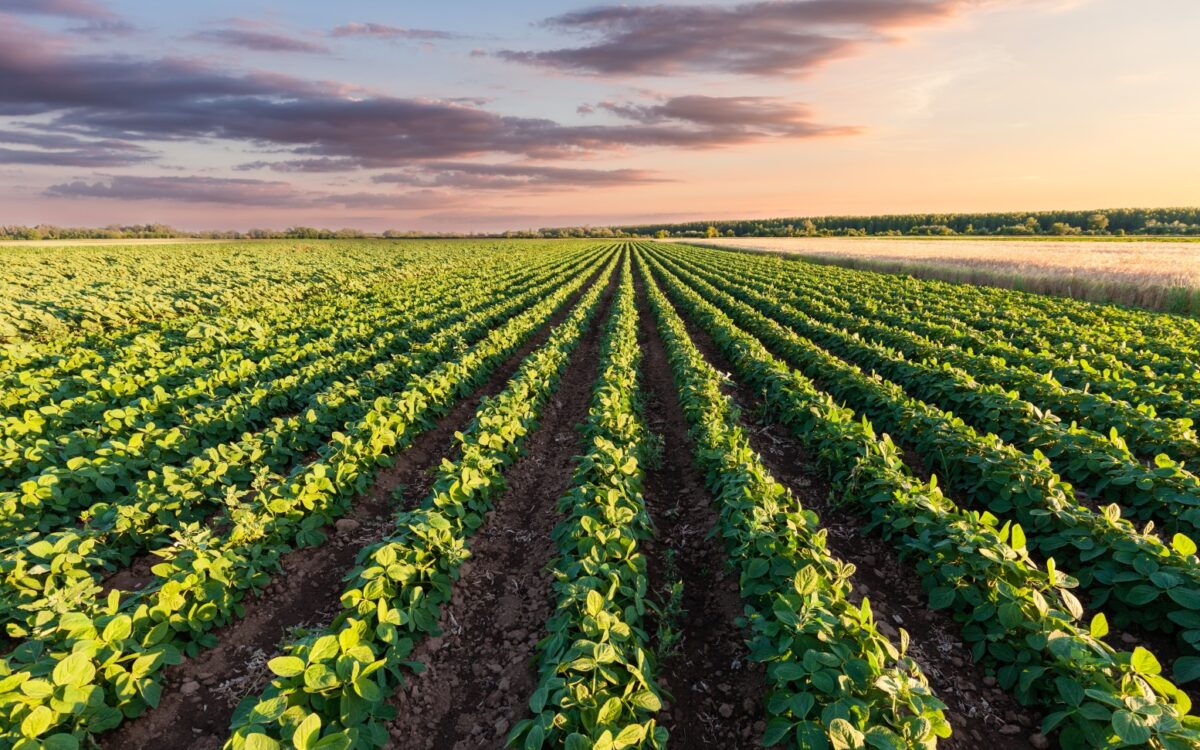FLAG scope 3 rules and implications for farming and food sectors
The new SBTi FLAG scope three guidance is set to have a major impact on companies involved in retailing, food and drink. The new Forest, Land and Agriculture Guidance (FLAG) from the Science Based Targets Initiative (SBTi) is also relevant for the scope 3 GHG inventories of companies involved in logging and tree products, agricultural production, animal sources, food/beverage processing and tobacco.
Companies with any land-intensive activity who wish to set science based targets (SBTs) are required to do so under FLAG guidance. A company whose FLAG activities contribute to 20 per cent or more of their revenue or emissions must also set FLAG targets.
Greenhouse gas emissions from agriculture, forestry and other land use sectors contribute 25 per cent of net anthropogenic emissions and the methods for modelling and understanding these complex sources of emissions have been steadily evolving.
The new GHG accounting, reporting and target-setting guidance for the FLAG sector by the GHG Protocol and SBTi present the latest guidance on both how to account for GHG emissions from land use change, land management and carbon removals as well as how to report on and set net zero targets for these emissions.
What does the FLAG Guidance involve?
Besides land use change, land management, and carbon removals and storage, FLAG now further includes demand-side mitigation levers as well as bioenergy emissions and removals from feedstock production. Demand-side mitigation levers include diet shifts and reductions in food loss and waste. Carbon removal and storage are of considerable importance to any regenerative project.
“The new guidance provides the world’s first standard method for companies in land-intensive sectors to set science-based targets to reduce greenhouse gas emissions that arise from agriculture, forestry, and other land use,” Mauro Cozzi, CEO of Emitwise, says. “It is a major step towards improving the way food businesses manage their scope 3 carbon emissions, and plan for net zero.”
The SBTi FLAG guidance offers a common, robust, science-based understanding of how much and how quickly businesses need to cut their land-related emissions in line with the Paris Agreement’s goal to limit global warming to 1.5°C.
The key requirements of the FLAG Guidance include setting short-term and long-term FLAG science-based targets, setting targets for fossil fuel emissions, accounting for removals in short-term targets, and that zero deforestation targets must be set for no later than 2025.
Why is the FLAG Guidance important?
In the UK, the average person has a carbon footprint of 12.7 tonnes CO2 per year and 23 per cent of this comes from their food purchases, that is more than their household and vehicle fuel emissions combined. Changes to the way that food is produced, labelled and sold will go a long way to reducing carbon emissions.
As the FLAG sector is responsible for such a significant volume of global emissions it is crucial for the industry to also be an imperative part of responding to the climate crisis, Cozzi says. “But research has shown that it has been difficult for food, agriculture and land sectors to evaluate and manage emissions using previous greenhouse gas accounting and target setting methodologies.”
To achieve climate goals, emissions from the sector need to be halved by 2050, and at the same time, according to the World Resources Institute, agricultural production is expected to increase by about 50 per cent from the current levels to meet increased food demand. However, a key barrier has been the lack of available guidance and methods for businesses to create transparent and achievable targets and disclosure plans. Therefore, a wide range of mitigation strategies such as the SBTi’s FLAG Guidance are required to both reduce emissions and enhance sinks.
What are the implications for businesses?
The FLAG guidance will change the way businesses – producers and retailers – calculate their scope 3 emissions associated with the use of agricultural and other natural land-based commodities. The guidance encourages businesses to participate in soil health and reforestation initiatives and collaborate with agricultural and land-based stakeholders such as farmers and food producers to reduce their carbon footprint and meet net zero targets. This can result in carbon removal; not just reducing but actually rewinding businesses’ carbon footprints.
The creation of the FLAG guidance is also critical for making carbon offsetting a realistically impactful tool. Carbon offsetting can often lead to many businesses greenwashing their operations whether it is intentional or unintentional. Many companies have simply invested in planting trees without looking into exactly who they were working with and what impact this would have. SBTi’s new guidance offers a much more robust approach.
A FLAG emissions boundary is all farm-gate emissions, excluding all emissions after the farm gate from the boundary, such as processing. Boundaries are important because FLAG includes carbon removal strategies; while certain methods can actively sequester carbon it should not de-emphasise emissions reductions.
Gathering data is a part of target setting and requires an emphasis on quantity and quality. While value chain primary data is always preferred, secondary data should be used to fill in gaps or while waiting for more accurate numbers. A lack of primary data should not deter from setting SBTs. Rather, primary data collection is an ongoing process of collection and refinement
There are two methodologies for setting SBTs: a sector-wide pathway or 11 commodity-specific pathways. Depending on a company’s distance from and variety-of direct emission sources, one approach or a combination of the two can be employed.
A sector-wide pathway approach is broader. If supplier emissions are dislocated and as a result there is an inability to collect primary data and if there is a diversification of emission sources, meaning that if a specific commodity’s emissions are less than ten per cent of revenue, then a sector approach should be taken. Mitigation activity includes land use change, agricultural improvement, dietary shift, reduction in food loss and waste, forest restoration, improved sustainable farm management and agroforestry and enhancement of agricultural soil carbon.
A commodity-specific pathway approach will involve companies with focused commodity emissions integrated with commodity carbon removal strategies such as biochar applications or storing soil organic carbon. Sectors affected include beef, chicken and pork, dairy, maize, wheat and soya, palm oil, rice, timber and wood fibre.
If the GHGP Landsector and Removals Guidance and the new SBTi FLAG guidance are relevant to your business it is essential that you update your targets in a timely manner if they are already set or comply within the specified time. The timelines for target setting are as follows: targets set before January 2020 need to be updated by the end of 2023. Targets set between February 2020 and April 2023 need to be updated by the end of 2024. Any organisation that establishes targets after April 2023 must adhere to FLAG.
“All food retailers know the importance of addressing scope 3 emissions from FLAG as emissions from FLAG form the majority of a retailers’ scope 3 emissions,” Andrew Opie, director of food & sustainability at the British Retail Consortium, says. “FLAG is one of the priorities for the BRC’s Climate Action Roadmap supported by all the major food retailers and we recently held a webinar with experts helping businesses understand how to report progress in reducing emissions from FLAG.”
Creating value from sustainable change
Food producers and retailers in the FLAG sector may view the new guidance as yet another regulatory burden but compliance can create new value and market opportunities. When Norwegian retailer ODA started providing their customers with the carbon footprint of their orders on sales receipts, purchases of meat substitutes grew by 80 per cent, 20 per cent of burgers sold were vegetarian and ODA’s customers bought 50 per cent more fruit and veg than the average customer. This shows that with trusted data and real action from producers and retailers, people are willing to change their behaviour to support sustainability.
“The SBTi’s new FLAG Guidance is a great tool for reducing land-based and agricultural scope 3 carbon emissions and in doing so generate new opportunities,” Cozzi says. “Some companies such as Nando’s have already created offsetting strategies which are deeply thoughtful, aligned with their business model and focused on protecting the lands that they’re actively operating in. The FLAG guidance will help other businesses achieve the same.”
Whilst the new SBTi guidance is a big step in the right direction it is up to businesses to consider the individual components and integrate them into their business models. However, they do not have to do this alone. Companies which help map nature-based carbon offsets using technology will be critical to support the adoption of this new guidance and help producers and retailers in their net zero journey.





